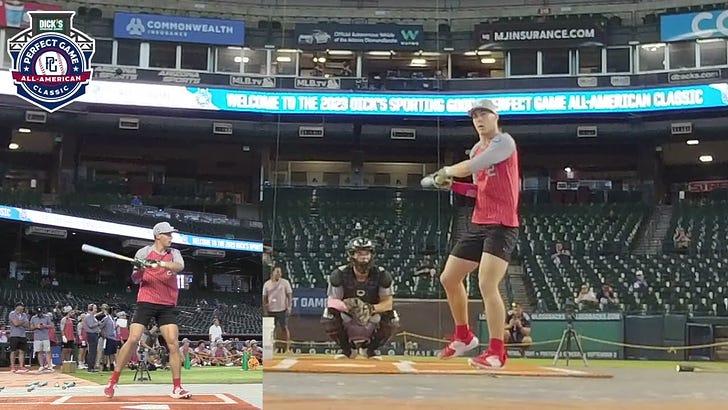Introduction to the 2024 draft: Top prep hitters available
A look at some of the top prep hitters available in the 2024 draft.
After touching on the college side of the draft over the last two weeks, we now shift over to the prep players available in 2024.
While college hitters dominate the top of the draft, there are still some intriguing prep players available.
At least entering the draft process, there isn’t a Walter Jenkins or Max Clark but as always, with the right spring, players can skyrocket.
Players to talk about
Konnor Griffin
He was initially part of the 2025 draft before reclassifying after winning the State Championship as a freshman. Last year, he hit almost as many home runs (8) as he did strike out (9).
Griffin has some intrigue on the mound, so it’s no surprise he’s getting plus-plus grades on his arm in the outfield. If there is one player who can ascend the draft rankings among prep players and challenge where Max Clark was taken last year, it’s Griffin.
PJ Morlando
He might have the best raw power among prep players in this class, but according to reports, he can get very pull-heavy in utilizing it in games.
Watching what video is available, his batting stance has changed through them, from a more crouched approach to more upright, but generally, the leg is stretched out in front of him.
Caleb Bonemer
If he makes it to campus, I’ll get a good look at him for the next couple of years as he’s committed to UVA, which is right up my neck of the woods.
Quite a few players project to shift from shortstop to third base, which isn’t uncommon, but Bonemer and his plus raw power may be the best of them.
He already has a history of hitting mid-90s velocity, although he does have some swing-and-miss problems due to being more of a heavy-swinger/aggressive approach.
Cade Arrambide
Arguably the best catcher in this year’s class, Arrambide has all the makeup to stick behind the plate at the next level. He does have an aggressive approach that leads to some swing-and-miss.
Bryce Rainer
There are quite a few taller, left-handed hitting shortstops in this year’s class, with Rainer standing at 6’3”.
From MLB Pipeline, “Most feel Rainer wants to hit, but may in the industry are intrigued by what he’s shown on the mound albeit in smaller sample.”
So, it’s not a surprise he has potentially a 70-grade arm at short but could settle in at third.
Owen Paino
Like Rainer, Paino is a 6’3” shortstop who hits left-handed but has more of a line drive/gap-power approach. He has a chance to stick at short, according to most of the sites, but even if he can’t, he can be a solid defensive third baseman.
Carter Johnson
We’ve hit three in a row here for the LH/SS profile, Johnson is ‘only’ 6’2” and has another gap power type profile currently. A lot of his power is pull-only based on his current approach.
Derek Curiel
He’s gotten Michael A. Taylor and Pete Crow Armstrong comparisons, mainly due to his ‘defense over offense’ profile. The Taylor comps are more along the lines where it may take a little more time for him to reach his peak than others.
Curiel also has one of the better contact rate numbers than any other prospect in the draft.
Charlie Bates
He’s an infielder from Paolo Alto, so the general consensus is Bates will be a hard sign due to his commitment to his hometown school, Stanford.
Some of the sites right now are very on his future defensive home, but all see him as a hit-over-power type of infielder.
Garrett Shull
Power over hit profile that will likely end up as a corner outfielder or first baseman. He’s a switch hitter but has been noted to have a better left-handed swing than when he’s in the other batter’s box.
Brendan Lawson
Baseball America is higher on Lawson than Pipeline (44th on BA, Not Ranked on Pipeline). He’s another tall, left-handed shortstop who may move off the position as he grows.
Hearing ‘violent swing’ and ‘swing and miss concerns’ aren’t usually things you want to hear, but he’s made it work up to now.
Sources used:




I dont see tommy tanks, im not interested
Still a lot of time (6 months) before the Amateur Draft, and all of the kids involved will have their own HS or College seasons to add to their resume's. Baseball is a business and therefore there are an outrageous number of "experts" to listen to or read, and with the advent of the exotic measuring equipment for hitters and pitchers, it is difficult for any ballclub to not have enough information to consider.
We can measure talent; much more difficult to properly assess character and work ethic as it applies to this sport. Have they developed problem resolution techniques and applied them to their games as they matured? How did they do academically in HS/University? Were they involved in activities other than just Baseball? Are they self-starters with a strong work ethic?